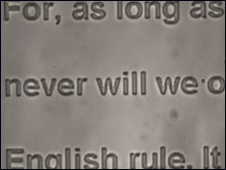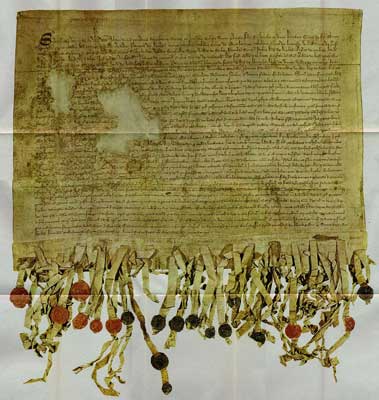WordPress database error: [Got error 28 from storage engine]
SELECT t.*, tt.*, tr.object_id FROM wp_terms AS t INNER JOIN wp_term_taxonomy AS tt ON tt.term_id = t.term_id INNER JOIN wp_term_relationships AS tr ON tr.term_taxonomy_id = tt.term_taxonomy_id WHERE tt.taxonomy IN ('category', 'post_tag', 'post_format') AND tr.object_id IN (5643) ORDER BY t.name ASC
1320 – Declaration of Arbroath
Before Pope John XXII, Scotland had been recognised as an independent nation by the papacy. Pope John preferred Edward II’s version of who was ruler of Scotland however, and in 1319 he accused four Scottish bishops of rebellion and summoned them to answer to him.
Robert I had been King of Scotland for thirteen years yet the Pope’s letters still addressed him as ‘Robert Bruce, Governor of Scotland’.
Bernard of Linton, Abbot of the Abbey of Arbroath wrote, in Latin, the Declaration of Arbroath. Sealed by eight earls and thirty-one barons, it is also known as the Declaration of Independence.
The Declaration begins by describing the origins of the Scots and the adoption of St Andrew as Patron Saint. It identifies the treatment England served upon the Scots and how Robert I: ‘..has brought salvation to his people through the safeguarding of our liberties’,
continuing:
‘Yet, even the same Robert, should he turn aside from the task and yield Scotland or us to the English king or people, him we should cast out as the enemy of us all, and choose another king to defend our freedom; for so long as a hundred of us remain alive, we will yield in no least way to English dominion. For we fight, not for glory nor for riches nor for honour, but only and alone for freedom, which no good man surrenders but with his life.’
Blog Posts about The Declaration of Arbroath

Freedom and Chips Please!
Read More






